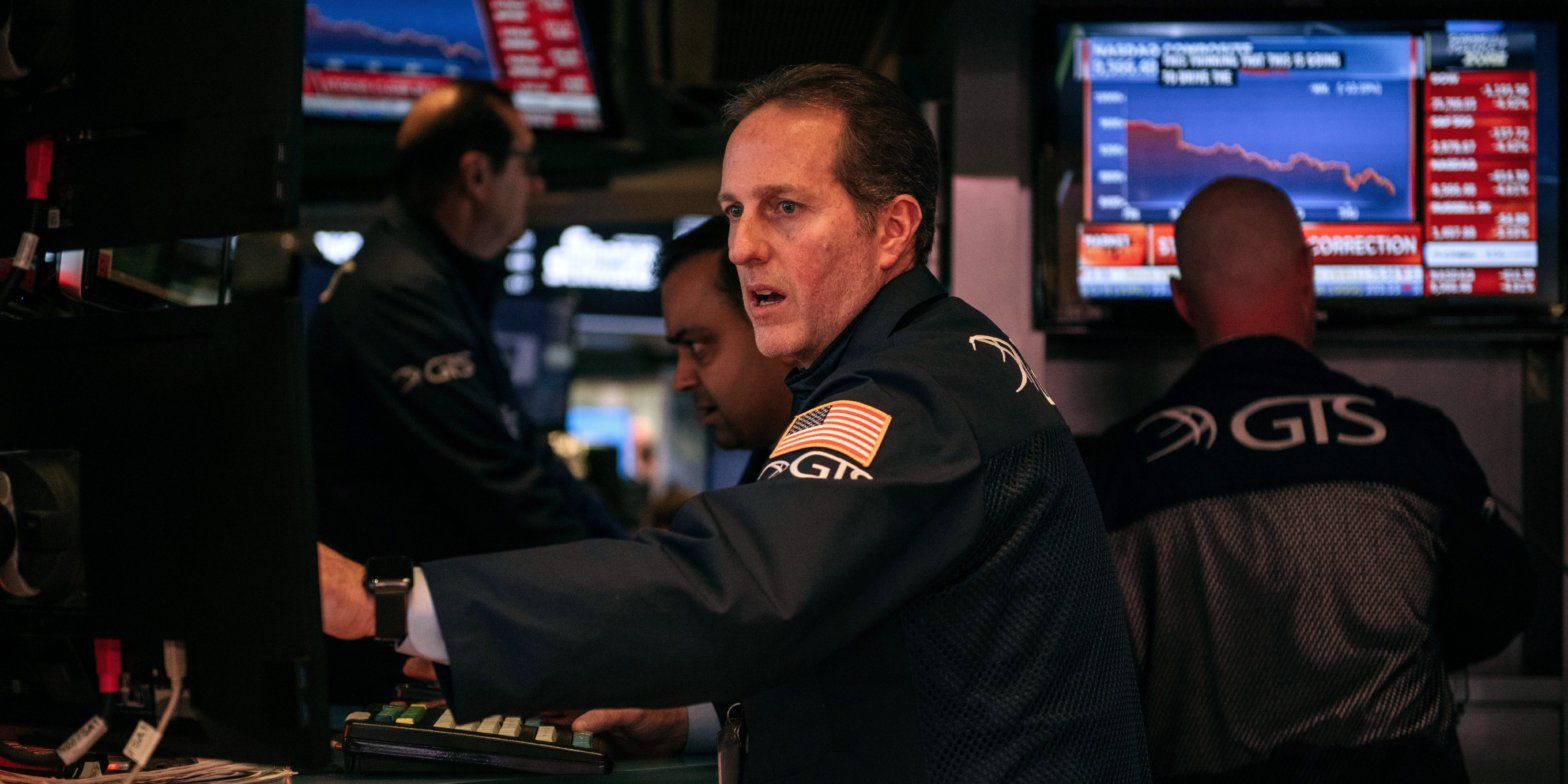Bearish signals in the stock market are beginning to percolate following the S&P 500’s rally, according to Bank of America.The bank highlighted various technical signals that have yet to confirm the breakout in stocks.”Dow Theory has yet to confirm a primary bull market from late 2022,” Bank of America said. Loading Something is loading.
Thanks for signing up!
Access your favorite topics in a personalized feed while you’re on the go.
The S&P 500’s recent breakout to new 52-week highs has yet to be confirmed by various technical signals, and that means a tactical bearish setup could be brewing in the stock market.
Bank of America highlighted a few risky signals investors should monitor to get a clue about a potential stock market sell-off, according to a Tuesday note. The signals are in limbo mode as they have yet to confirm a new bull market in stocks, and have yet to flash a bearish reading that would suggest a decline is imminent.
These are the stock market signals to monitor to better understand if the rally in stocks will continue in the second half of the year or give way to a sell-off, according to BofA.
1. Dow Theory confirmation.This 100+ year-old indicator flashes when the Dow Jones Industrials and Transportation Averages break out in tandem, each confirming the other’s trend. The thinking goes that if the economy is doing well and consumers are buying goods, transportation stocks should also be doing well as they are tasked with moving those goods.
“The Dow Industrials and Dow Transports have confirmed the tactical US equity market rally from March, but the Dow Theory has yet to confirm a primary bull market from late 2022. The Dow Industrials need to break above the 11/30/2022 peak at 34,590, while the Dow Transports need to clear the 2/2/2023 peak at 15,641 to confirm a bull market. Until then, the risk remains for a bifurcated US equity market,” BofA technical strategist Stephen Suttmeier said.
The Dow Industrials Average is currently trading at 33,844, while the Dow Transports average is trading at 15,163.
Bank of America 2. Negative divergence in breadth signal.Technical analysts like to see confirmation between signals when a stock market breakout occurs, especially in breadth measurements, which gauge the underlying participation of individual stocks in an ongoing rally.
Looking at the NYSE Composite Index and its corresponding NYSE advance-decline line, Suttmeier identified a negative divergence as the former recently made a higher high and the latter recently made a lower high. For this tactically bearish signal to dissipate, the NYSE advance-decline line would need to print a series of higher highs to confirm the bullish move seen in the NYSE Composite index.
“A higher low for the NYSE stocks advance-decline (A-D) line vs a lower low on the NYSE Comp (NYA) provided a December 2022 into March 2023 bullish divergence for market breadth. However, this important measure of market breadth has not confirmed the rally from the March low, which sets up a tactical bearish divergence for US equities,” Suttmeier said.
Bank of America 3. High-yield credit spreads have not confirmed rally.When markets begin to worry about an imminent sell-off, high-yield credit spreads typically lead the way in warning investors about the risk of heightened volatility by blowing out. The US high yield option adjusted spread index is currently in no-mans land, and it needs to see a further breakdown to confirm the recent rally in the stock market. That hasn’t happened yet.
“US high yield option adjusted spread [is benign] but has not confirmed year-to-date rally. The Corporate BAA to US 10-year spread has contracted below 2.0, which is positive. Although the US high yield option adjusted spread (OAS) has not widened out to show risk-off credit stress, it has not yet confirmed the YTD highs on the SPX. We view this divergence as a risk,” Suttmeier said.
Bank of America
